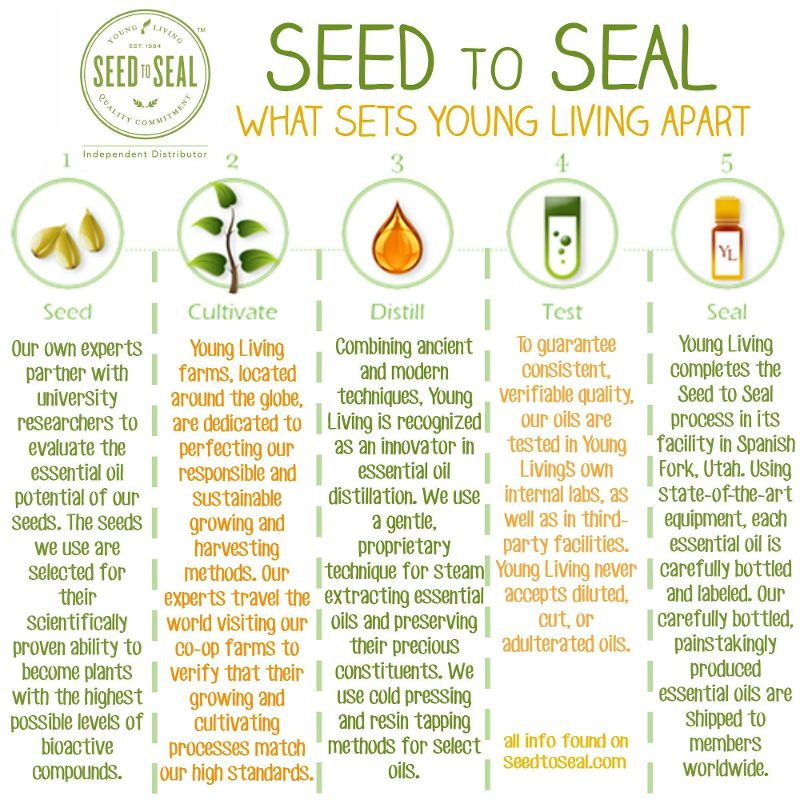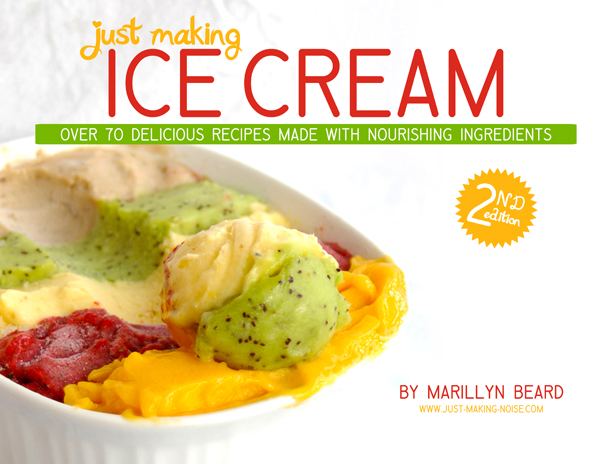God designed our bodies to heal themselves {this is the purpose of our immune system} however, when our bodies are not functioning at their optimal performance, it has been my personal experience that essential oils (along with clean diet, homeopathy, herbs, and supplements) can give the body extra support in a natural way without harmful side effects.
I encourage you to do your own research and make sure you are comfortable with the decisions you are making as you incorporate natural remedies into your family’s life. This is your health after all, and it should be taken seriously! I’m not an expert or a doctor, but I trust Young Living because of the research I’ve done and because of my own experiences with their oils. After all, if you haven’t experienced something for yourself, how can you truly understand it?
My research led me to exclusively choose Young Living because of their Seed to Seal® promise and the quality and purity of their oils. Please take a moment to visit www.seedtoseal.com to see how Young Living goes through this whole extensive process.
So, what are essential oils, exactly?
Essential oils are the “lifeblood” of a plant and the most powerful part of a plant. They protect the plant from disease, provide nutrients, and help repel bugs. Essential oils are distilled from flowers, trees, shrubs, herbs, etc, and they are very complex… consisting of over 100 different natural, organic compounds. These natural compounds are what give plants {and their oils} their unique healing attributes and characteristics.
It’s truly amazing to think that before creating man, God already created these resources that can provide support to our bodies! You guys, they were man’s first medicine! You may just be hearing about essential oils for the first time, but they’ve been around since the dawn of time and even mentioned in the Bible. Just over the last 150 years, people have been rediscovering the health benefits of essential oils – mentally, emotionally and physically – and I am thrilled about that.
Young Living Essential Oils Can:
- reach every cell in your body within 20 minutes when applied topically
- help eliminate toxins in your body
- help support the different systems of the body: digestive, nervous, muscular, and more
- promote cellular regeneration
- pass through the blood-brain barrier
- work on emotions via the limbic system of your brain
- promote healthy emotional wellness and relax and clear the mind
- transport nutrients
- be powerful antioxidants
- remove toxins in the air & promote healthy, breathable air
- be a great alternative to chemical or toxic fragrances
Now, I have to get official for a second before we really jump in. Anything that is shared in this post is based on my personal experience using Young Living oils and products. This introduction to oils is not intended to diagnose or cure any medical condition. I will not claim that Young Living essential oils will cure, prevent, or treat any disease or illness. Also note that everything that will be discussed in this post pertains only to Young Living’s essential oils. I will not compare companies, brands, or promote one form of usage over another.
How do I use them?
There are 3 simple ways to use essential oils to improve your health -mentally, emotionally, and physically-
Inhale
{The German Model of Use} In really simple terms, volatility is a substance’s ability to leap into the air, and it’s why all essential oils are fragrant – you are able to smell some of the more potent oils from the across the room just by opening the bottle! Using the inhalation method, you can simply breathe the oils in, either by putting them on your hands and inhaling, using a diffuser to disperse into the air, or inhaling straight from the bottle. Tests have shown that essential oils can reach the heart, liver, and thyroid in 3 seconds and in less then 1 second essential oils hit your limbic system, which have the power to affect your mood! This proves that scents are linked to our memory and happy memories can be triggered by smell.
Apply
{The English Model of Use} Our skin is our largest organ – what we put on it gets taken into the system and is either used, stored, or filtered out. When we apply most essential oils to the skin, we usually use carrier oils. A carrier oil is a quality vegetable or fruit oil used for diluting and spreading essential oils. I prefer coconut & almond oil, but you can also use grapeseed, hemp, jojoba, sunflower, extra virgin olive, etc. Using the application method, you can apply oils topically to your feet, spine, chest, or onto the area of concern. Young Living always recommends using a carrier oil when applying oils topically to children. Tests have shown that oils can be found in the bloodstream 26 seconds after applying them topically!
Ingest
{The French Model of Use} While there is a lot of information on the topic of ingestion, I believe that caution needs to be taken when using essential oils internally. I enjoy using essential oils occasionally for cooking or baking, but they can be added to water or tea to make a refreshing (and immune-boosting!) drink or you can add the oils into a vegetable capsule or put a few drops to a teaspoon of honey. Some people only take oils internally when needed to support the immune system, while others choose to take them as part of a daily regimen. If ingesting oils is not something you feel comfortable doing, then don’t do it. Applying essential oils topically or using the inhalation method are two fantastic ways to experience the benefits of essential oils.
Are oils safe?
Yes, but there are several safety precautions to be aware of when using essential oils. It is important, first and foremost, to read the label and make sure you know the basics before using oils. It’s easy to get overwhelmed with all of the information available, but using common sense and starting gradually will help ease any sort of intimidation you might feel as you begin using essential oils in your everyday life.
Some oils are considered “hot,” which means you’ll feel a cool or warm sensation when applied. Most essential oils – always and especially “hot oils” – should be diluted when applying to a sensitive area. If you get an essential oil on a sensitive area, the best way to placate the burning sensation is to apply a carrier oil or rice milk. For instance, if you get an essential oil in your eye, do not flush it with water. You will be forcing the essential oils deeper into your eye, causing the uncomfortable burn to feel more like a very uncomfortable burn.
It probably goes without saying, but please never put essential oils directly into your eyes or ears, as this could cause damage. If your ear is bothering you, for instance, placing a few drops of oil on a cotton ball, then taping the cotton ball over your ear is recommended. The oil’s volatility will get to the area of concern easily using this method. You can also apply diluted oils around the outsides of your ears.
More Safety Tips:
- Young Living’s citrus oils are photosensitive. If you apply them topically, you should avoid direct sunlight for about 12 hours.
- If you add oils to your water, make sure to drink out of a glass, or a glass water bottle. Do not use plastic, as some essential oils may erode the material.
- Young Living always recommends using a carrier oil and diluting properly when applying oils topically to children.
- When using essential oils in your bath, add a few drops to epsom or sea salt first, then put the salt into your bath water. This will help the oils adhere to something, so they’re not just sitting on top of the water.
- If you apply an oil topically and it feels uncomfortable, apply a carrier oil over it, then wipe away with a cloth. The carrier oil will “carry” the essential oil off of your skin.
- Keep your oils stored in a cool, dark place and avoid extreme temperatures, hot or cold.
Seed to Seal…
Where and who you buy your oils from really does matter! Oils found in stores – even organic stores and farmer’s markets – generally contain fillers and other excess ingredients.
Purity is so important! Do your research, and make sure that you are choosing pure oils. Young Living cares for their product from the seed they plant (including the ground they plant it in) to the seal that goes on the bottle. They call their process the Seed to Seal® promise, and I like to say that it’s what sealed the deal for me. Young Living is beyond organic in their farming practices.
Here is the Seed to Seal® site one more time: www.seedtoseal.com – please take a minute to look through!
This image explains the basics:

